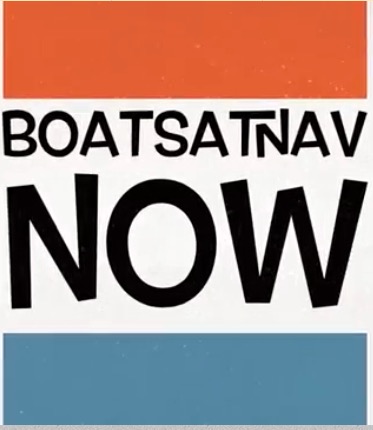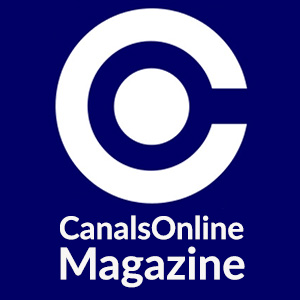24 July 2023
INNOVATION AT CANAL CHARITY’S LOCK GATE WORKSHOPS
The Canal & River Trust’s lock gate workshops, at Bradley in the West Midlands and Stanley Ferry in Yorkshire, are bringing forward several small changes to lock gate production to increase speed and efficiency.
With over 1,500 locks across the Trust’s canal network, and a working life of typically 25 years, there is a constant cycle of production and replacement of old lock gates. This year the Trust’s specialist team is producing 123 separate lock gate leaves for installation across the network.
The small changes to production will save the team 25 working days each year, enough time to produce at least an additional two top end single lock gates or one set of bottom end mitre gates.
A working group including workshop carpenters, heritage specialists, engineers and volunteer boaters on the Trust’s Navigation Advisory Group has brought forward the changes.
First designed 250 years ago, the traditional black and white lock gate is an iconic feature of the nation’s landscape, and it is important to preserve this heritage aspect. One change agreed by the group is to only paint lock gate steelwork that is above the waterline. As the painting is purely decorative, this will retain the characteristic look while whilst having no impact on the resilience of the gate.
While each lock gate is unique in terms of its precise measurements, different waterways or lengths of waterway have unique gate designs. Establishing a design template for different canals or lengths means the workshops don’t have to reproduce any 20th century, non-heritage or functional anomalies which may currently exist on each canal. Standardised designs are now in place for the Shropshire Union Canal, Birmingham Canal Navigations and Worcester & Birmingham Canal, with work ongoing for the Oxford, Stratford and Montgomery canals.
Further location-specific changes, in some instances requiring consent from local authorities, will see an alteration to the design of the bottom end gates on the Grand Union Canal which will negate the need for a second horizontal layer of planking without compromising the performance of the gate.
The group has looked at ways the Trust can save money on materials. In conjunction with engineers from the Timber Research & Development Association it has refined the Lock Gate Calculation sheets. These calculate the size of timber required to achieve the required strength of the lock gate. The new sheet allows the teams to try different timber sizes and is likely to produce a saving of 5% on timber usage.
Simon Turner, workshops manager at Canal & River Trust, said: “Anyone who knows the canals will understand the enduring appeal – and vital function – of the traditional lock gate. While our specialist workshops still build these lock gates in-house, it’s more important than ever that we find ways to do this more efficiently. Our historic canals are facing significant challenges from floods and droughts, driven by a changing climate, and from a cut in future funding from government.
“The proposals for alterations to the designs and production process were bought forward by the teams who carry out the work, with valuable ideas and feedback shared by boaters on our Navigation Advisory Group. Any new ideas must respect the important heritage of the canals, while balancing the needs we have, as a charity, to safeguard the future of the ageing network.”
For more information about the Canal & River Trust, please visit: canalrivertrust.org.uk.
ENDS
Fran Read (she/her)
National press officer
I work Mondays, Tuesdays, Thursdays, and Fridays
M 07796 610 427
E fran.read@canalrivertrust.org.uk
Sign up for the Canal & River Trust e-newsletter
Become a fan on Facebook. Follow us on Twitter and Instagram
If you would like to unsubscribe from Canal & River Trust press releases or the news round-up please let me know at fran.read@canalrivertrust.org.uk.
Keep in touch
Sign up for the Canal & River Trust e-newsletter https://canalrivertrust.org.uk/newsletter
Become a fan on https://www.facebook.com/canalrivertrust
Follow us on https://twitter.com/canalrivertrust and https://www.instagram.com/canalrivertrust
This email and its attachments are intended solely for the use of the intended recipient. If you are not the intended recipient of this email and its attachments, you must take no action based upon them; please delete without copying or forwarding and inform the sender that you received them in error. Any views or opinions expressed are solely those of the author and do not necessarily represent those of The Canal & River Trust.
Canal & River Trust is a charitable company limited by guarantee registered in England & Wales with company number 7807276 and charity number 1146792. Registered office address National Waterways Museum Ellesmere Port, South Pier Road, Ellesmere Port, Cheshire CH65 4FW.
Cadw mewn cysylltiad
Cofrestrwch i dderbyn e-gylchlythyr Glandŵr Cymru https://canalrivertrust.org.uk/newsletter
Cefnogwch ni ar https://www.facebook.com/canalrivertrust
Dilynwch ni ar https://twitter.com/canalrivertrust ac https://www.instagram.com/canalrivertrust
Mae’r e-bost hwn a’i atodiadau ar gyfer defnydd y derbynnydd bwriedig yn unig. Os nad chi yw derbynnydd bwriedig yr e-bost hwn a’i atodiadau, ni ddylech gymryd unrhyw gamau ar sail y cynnwys, ond yn hytrach dylech eu dileu heb eu copïo na’u hanfon ymlaen a rhoi gwybod i’r anfonwr eich bod wedi eu derbyn ar ddamwain. Mae unrhyw farn neu safbwynt a fynegir yn eiddo i’r awdur yn unig ac nid ydynt o reidrwydd yn cynrychioli barn a safbwyntiau Glandŵr Cymru.
Mae Glandŵr Cymru yn gwmni cyfyngedig drwy warant a gofrestrwyd yng Nghymru a Lloegr gyda rhif cwmni 7807276 a rhif elusen gofrestredig 1146792. Swyddfa gofrestredig: National Waterways Museum Ellesmere Port, South Pier Road, Ellesmere Port, Cheshire CH65 4FW.







































































 RCTA Linslade Easter Floating Market
RCTA Linslade Easter Floating Market RCTA Gt. Haywood Easter Floating Market - Full
RCTA Gt. Haywood Easter Floating Market - Full IWA Canalway Cavalcade 2025
IWA Canalway Cavalcade 2025 RCTA Startops May Day BH Floating Market at Marsworth
RCTA Startops May Day BH Floating Market at Marsworth Norbury Canal Festival 2025
Norbury Canal Festival 2025 RCTA Burton on Trent May Day BH Floating Market
RCTA Burton on Trent May Day BH Floating Market RCTA Willington Floating Market
RCTA Willington Floating Market RCTA Berkhamsted Floating Market
RCTA Berkhamsted Floating Market Moira Canal Festival
Moira Canal Festival The Batchworth Rally
The Batchworth Rally



Comments are closed.